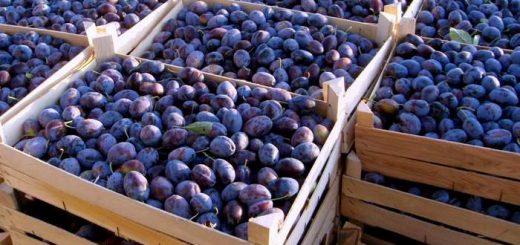Melon: Did you know that around the world there are almost 40 types of melons? We have compiled the 10 most popular

The melon, or cucumis melo , is a fruit that has many lovers thanks to its sweet flavor and how juicy it is in each bite. The best thing about this food is that, in addition to having a high water content, it provides us with many nutrients , vitamins and minerals, especially phosphorus, potassium and sodium.
In case you did not know, the melon has been on earth for more than 4,000 years and, since it emerged, it has become a vital source of food for Africans and Egyptians . There are many varieties of melons in the world, it is estimated that around 40, with different flavors and shapes but, as there are so many, in today’s article we are only going to talk about the types of melons according to their rind .
Types of melons
Although the melon has its origin in Asia, today it is grown in any part of the world where there is a warm climate with little rain. We can enjoy it both in summer and in winter since, depending on the time of year in which we find ourselves, it will be the season for one variety or another, bearing in mind that summer ones have more smell and flavor and can spoil earlier, while the winter ones last longer and have a smoother bark.
In general, melons are classified according to the color of their skin, their pulp and their external appearance and, as we have told you a few lines above, we are going to talk about the most common types of melons according to their skin :
Spanish green melons
As its name indicates, the rind of these melons is green and it is the most common variety that we usually find in Spain . . Within the green melons we can find:
Toad skin melon
The Piel de Sapo melon is one of the most popular in summer and is grown mainly in Castilla La Mancha, Murcia and Almería. It is characterized by its elongated, oval shape and, although it has little odour, it tastes very sweet when ripe . Its rind is hard and thick and is green with stripes of the same color, color intensity that will change depending on the degree of maturity in which the melon is. Finally, say that its pulp is greenish yellow .
Trending melon
This melon, unlike the Piel de Sapo melon, is a winter fruit since, although it is harvested between June and October, it keeps very well until December . It is also grown in Spain, it has an oval appearance, a rough dark green rind, which makes it an easy-to-export variety due to its resistance, and its pulp is white and has a very sweet flavor .
Melon rochet
The biggest difference between the Rochet melon and the other two melons above is that, although its rind is also green, it is not rough, but completely smooth . It also has an oval shape and ripens very quickly, being able to weigh around two kilos at its optimum stage of maturity . It has a very sweet flavor and its pulp is white.
Yellow melons
Yellow melons, those whose skin is yellow , forgive the redundancy, are considered winter melons. Its pulp is very sweet, its rind very crunchy and, in turn, we can divide it into two varieties:
Golden yellow melon
The golden yellow melon has been cultivated for more than 700 years in the Valencia area. Its rind is yellow and its pulp is compact, white and with a very balanced sweet taste. .
Canary yellow melon
The yellow canary melon is named for its bright yellow color , very similar to that of a canary. It is a very common species in Japan, South Korea and Morocco, its pulp can be white or green and its flavor is very characteristic because it is not as sweet , it is rather spicy like toad skin.
cantaloupe melon
The name of this melon comes from the Cantaloupe, the region of Italy where this variety is said to have been cultivated for the first time, although its country of origin is Armenia . Currently, the country in the world that produces the most this type of melon is China and in Spain its cultivation can be found in Almería and Murcia. Its bark is very characteristic because it is thick with shades of brown and green and, furthermore, it has a mesh shape. It is not a melon as oval as the previous ones, but it is rather round, its weight is around 5 kilos, its pulp is orange, very sweet and aromatic. It is a type of melon that is widely used to make desserts and smoothies .
Gaul Melon
This type of melon is native to Israel and is a hybrid between the green flesh of the Ha-Ogen melon and the rind of the Krimka melon. This melon is somewhat smaller than the varieties we have seen so far, as it weighs about a kilo, is round and has a mesh-shaped rind that turns yellow when it reaches its optimum point of maturity. It is sweet and aromatic and, to be cultivated, it does not need specific climatic conditions, which is why it is so easy to grow it in any country . Its texture is a bit buttery.
Charentais melon
This last type of melon that we bring you today is French and its rind is very peculiar since it is striated, imitating segments . It is spherical, its pulp is orange and its flavor and aroma are more intense than the previous ones. It is very difficult to export to other countries as its rind is very thin and its meat very soft, making it very difficult to find in supermarkets.
We hope you have enjoyed this article where we have compiled the 10 most popular types of melons according to their rind . As we have already mentioned at the beginning, around the world there are almost 40 more species. One day we will dare to collect them all!











